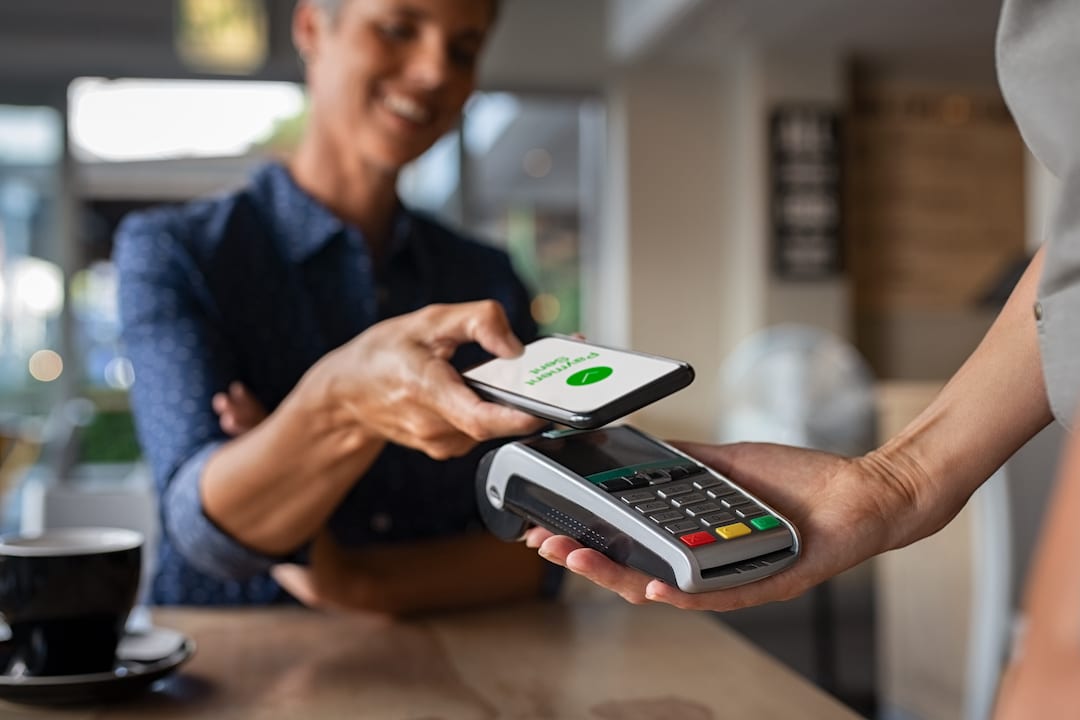Navigating the Future: 5 Key Trends Shaping the Evolution of Payment Processing
With advancing technology and needs spurred on by post-pandemic living, the payments processing industry is one of the fastest changing. Banks, credit card companies, and financial institutions are doing their best to keep up with consumer spending habits and their demand for digital immediacy, while at the same time trying to maintain and provide secure payment methods and not outpace their staffs.
Your clients who can adapt and integrate new payments technology the fastest will have a clear advantage over their competitors. Here are five trends they need to keep in mind in order to help them adapt.
1. The Increase in Mobile Payments
Cards? … where we’re going we don’t need cards. While we’re not yet riding around on hoverboards and in flying cars, more and more people are using mobile wallets instead of cash or credit cards. When pandemic concerns caused many retailers to refuse cash and opt for electronic and digital payments only, cash usage fell from 41% in 2019 to 35% in September of 2020, and cashless in-person business almost doubled.
A major part of these cashless transactions are mobile wallet payments as customers drive more use of “frictionless” payments, such as Apple Pay, Starbucks, Google Pay, and Samsung Pay. When looking at all transactions, usage of mobile wallets jumped from 38% before the pandemic to 55% during. It’s estimated mobile wallet users will rise by 6.5 million every year until 2025.
“What I foresee [for the future] is the account is no longer a card,” says Damon Moorer, CEO of TCM bank. “There [will be] all these different ways for the account to be accessed to make a payment, whether it be via [my smartphone,] my watch, my car, on plastic, a ring, a bracelet—there’s no telling. Anything that can support NFC [near-field communication] can ultimately become a method by which someone makes a payment.”
2. Security, Security, Security
With cyberattacks and fraud on the rise in the last year, a recent study by Visa notes the number one area of tech investment this year will be in payment security and fraud management software. As travel and other industries that slowed down last year begin to pick up, experts estimate ID fraud will pick up as well, further pushing the financial sector to make security their main priority. Besides incorporating the use of artificial intelligence to flag and identify fraudulent patterns and transactions, expect the concept of digital identity to build and strengthen. Payments processors will be shifting to strong customer authentication measures such as using electronic-ID schemes as well as multi-factor authentication.
3. More Artificial Intelligence
AI technology is becoming a major advantage for merchants for anti-fraud systems or software to reconcile payments. Financial institutions will also use more AI for assessing credit risk by analyzing data beyond credit scores and bank account statements. Using transaction histories, bank records, and usage of products, financial institutions can improve consumer assessment models to make better predictions of risk and better choose lower risk customers.
4. More Buy Now Pay Later
With the way Americans have increasingly taken on credit card debt the last few decades, almost no one saw the concept of “layaway” or paying for certain items over time making a comeback. However, thanks to new, digital “buy now pay later” options through providers like Klarna, Afterpay, and Affirm, the youngest generation of consumers, Generation Z, is fueling the Buy Now Pay Later movement. 13% of 18-to-34-year-olds have used a buy now pay later option offered by a merchant compared to the overall average of 9%.
Because the service is bringing in more revenue for retailers, experts see this trend increasing. Klarna reported a 30% increase in checkout conversion rates by allowing people to pay over time, and Affirm is reporting an 8 to 18% decrease in returns. Consumers are spending more per transaction as well. Afterpay reported a 50 to 200% increase in units per transaction, and Affirm reported an 87% increase in the average order.
5. More Digital Peer-to-Peer Payment
For over a decade now, people have been settling dinner checks or paying friends back through P2P payment apps by PayPal, Venmo, and Zelle. … and so much so, app names have become verbs. “Just venmo me.” In 2020, consumers started asking businesses if they’d take P2P payments in order to avoid exchanging cash by hand. Older users have gravitated toward using Zelle, while younger users are preferring Venmo and increasingly using Square’s Cash App. Square’s user base grew by 50% in the past year, and research firm Insider Intelligence predicts P2P payments will grow by 37% this year.
Savify brings savings to businesses through rewards programs over our digital platform and even through customized apps. To bring your clients or members a rewards program, offer them more value, and increase retention, contact us to get started.


